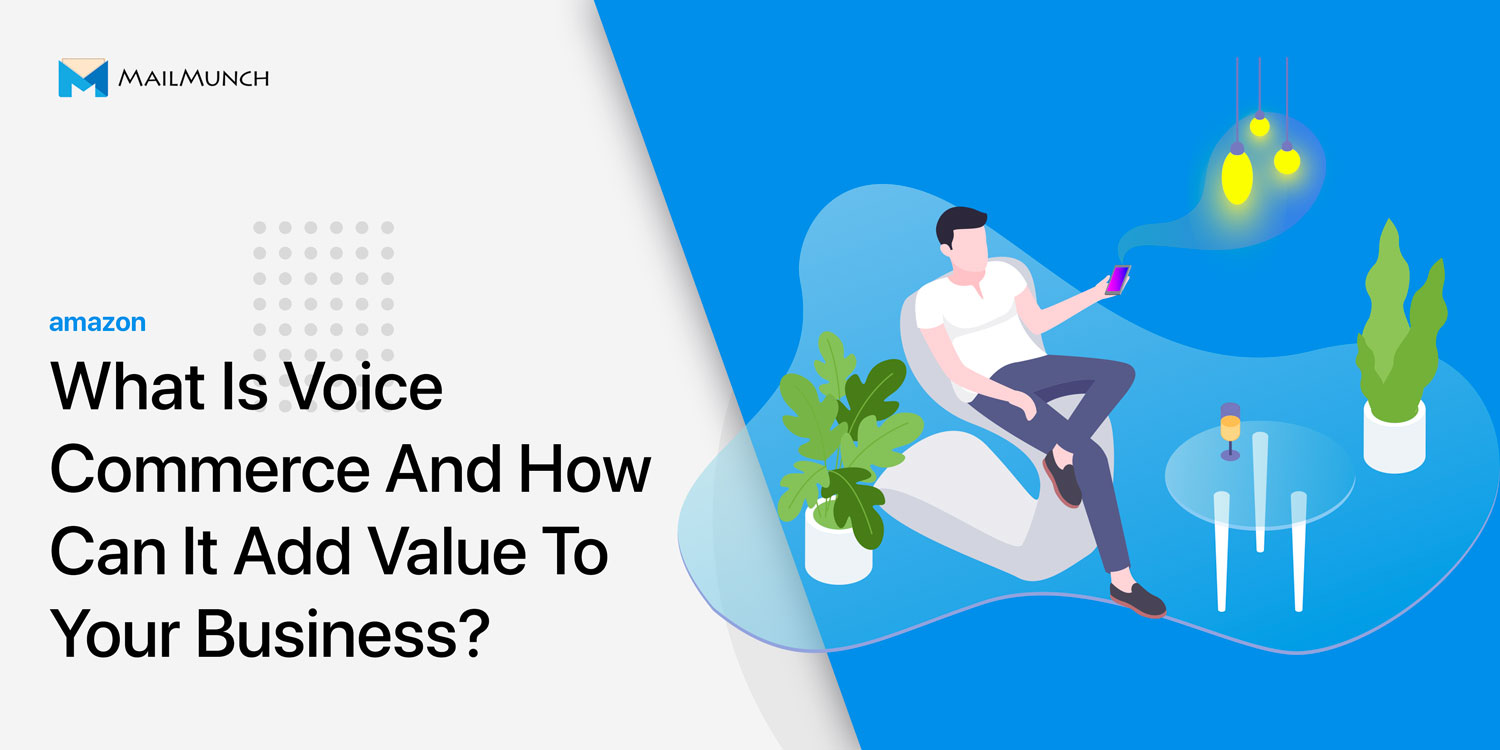

Last updated on
July 27, 2023
In today’s market, there are a lot of challenges to running a successful e-commerce store. While there may be a wide range of apps and software available, these services aren’t helpful enough on their own, for the fact that they are available to every e-commerce store owner, just like everyone has a blog, runs ads and gives discounts. With this in mind, how can you make sure your e-commerce store stands out from the crowded competition?
One way to shine is by improving your customer service experience, and a great way to do that is with voice commerce. Here’s a full guide on this new sales tool that will help you and your business rise above the competition.
Put simply, voice commerce is the ability to place an order for a product using your voice. Voice technology is most commonly associated with voice-activated assistants like Alexa or Google Home, which respond to voice commands to play music, look up information or control home appliances. The newest development in this technology is to simplify the online shopping experience by connecting users to eCommerce retailers through voice commands.
Here’s an example of a common voice commerce interaction between a user and their voice-activated assistant:
Customer: Alexa, what was the last thing I bought on Amazon? Alexa: It was Axe Body Spray. Would you like to purchase that again? Customer: Yes please.
If you sell your products via a large retailer like Amazon, chances are customers are already buying your products through voice searches. “Voice commerce is just another way of reducing the friction between customers and products,” says Del Smits, a marketer at Boomessays, “making the buying process quicker and easier. It’s especially useful for consumables that customers return to again and again.”

There are some simple ways in which you can implement voice commerce in your eCommerce store to make purchasing easier for your customers.
Some companies have tried to use voice search to replace their entire web or mobile commerce search features, but this can be a costly and complicated project that relies on high-quality voice recognition technology that is not yet widely available. Also, relying entirely on voice commerce features marginalizes visual commerce programs which are the norm in the majority of online shopping experiences. Customers may get frustrated if they can’t look through a catalog and instead have to sort through your products without seeing them.
The greatest advantage of voice commerce is to reduce the amount of time customers have to spend between deciding to buy something and completing their purchase. That’s why the above method of relying entirely on voice search is so self-defeating: the traditional method of purchasing items is still faster. And while that’s true for many methods of online shopping, there are some ways in which voice commerce is quicker than traditional eCommerce purchasing.

The most common and efficient way to implement voice commerce is with repeat ordering. In this case, customers already know what they want to buy — it might be something they buy every month or even every week — so they don’t need visual confirmation of their purchase. Allowing customers to order this item through voice commands cuts down the time spent logging into an app, scrolling through your catalog and going through the checkout process.
Another advantage of repeat ordering is when a customer may not remember the exact name or type of product they ordered last, but know they had a positive experience with it. Repeat ordering does not require them to remember all the product details, making it more likely they’ll re-order.
Repeat orders are most common with perishables like groceries or other food items, or other consumable products like hygiene, cosmetic or medical products. Customers can even set up reminders to re-order products they use a lot, reminders which can be voiced through Alexa or similar assistants.

If you want to take advantage of voice commerce using Alexa, perhaps the biggest player in voice-activated shopping experiences, you’ll need to set up an Alexa skill for your eCommerce store. A skill is essentially Amazon’s term for apps on its voice assistant: it’s the services Alexa can use to perform specific functions from playing audiobooks to turning on lights.
By creating an Alexa skill you can provide dedicated voice commerce functionality for your eCommerce store without having to sell your products through larger retailers.



Make sure the name on this account is the same name as the Invocation name of the skill, and that your legal business name appears in your Amazon Pay account details, or you may be blocked on suspicion of fraud. Be extra sure if you are setting up an account with Amazon EU, as they are very strict with verification processes.
When building your skill, there are a few points to keep in mind:
The benefits of voice commerce notwithstanding, there are some problems associating voice shopping with interactivity and also with customer’s data security.
Terri Hatchett, a voice search expert at Marketing Assignment, explains that “while voice commerce is a much more efficient way of repeat ordering products, this efficiency is somewhat dependent on the cooperation of financial companies beyond the retailer. Only a small number of banks and credit card companies allow purchase confirmation via voice for security reasons.” One of the few companies that do navigate this block is Amazon itself, whose Amazon pay feature allows voice confirmation for payments.
These cautious banks and credit card companies may well have a point, as there have been some instances of data breaches associated with voice commerce shopping. This is partly why some customers are wary of using voice commands to do online shopping. However, you can help to counteract security issues by requiring two-factor authentication or PIN codes to confirm purchases.
The short answer is, It depends on your goals as a business. Voice-activated purchasing has the potential to add value to your customer offerings and boost your brand above competitors. As a result, voice commerce is a good way to retain customers and boost repeat orders from existing customers, provided you can ensure their data is safe.
That being said, there’s little evidence that customers are actively looking for voice search in their shopping experience, so if you’re looking to gain new customers this is likely not the way to do it. For most businesses, this is a deal-breaker: why pay to develop something that is not going to drive customer acquisition?
However, for some businesses, brand building is and boosting customer value is a priority. If that sounds like you, voice commerce could be a great way to show your customers that you are committed to innovations in eCommerce.
Content marketing guru at Mailmunch. I’m passionate about writing content that resonates with people. Live simply, give generously, stay happy.
Tags: